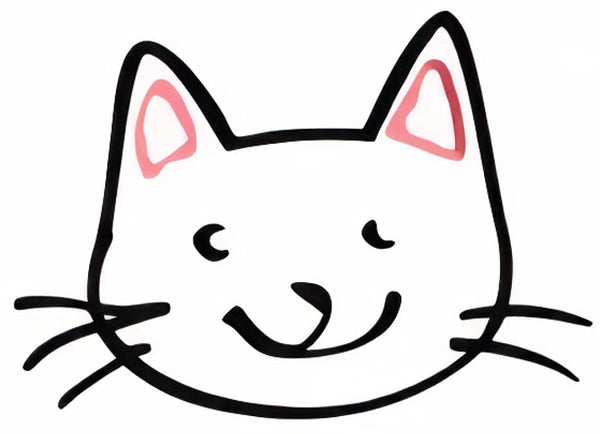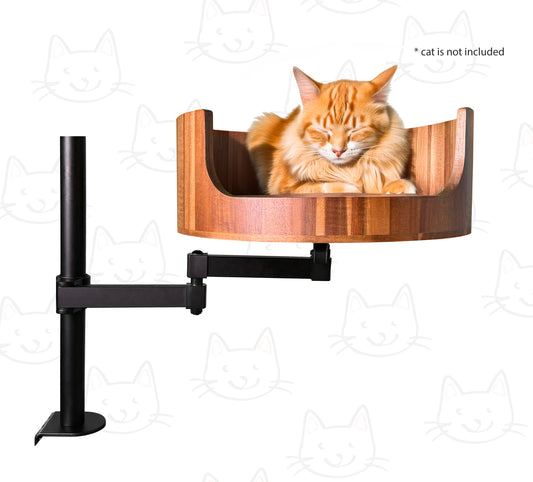
Meaning of Cat Wagging Tail: What It Really Indicates
Share
Cat owners often find themselves perplexed by the various behaviors exhibited by their feline friends. One common behavior that confuses many is tail wagging. While tail wagging is often associated with dogs, cats also wag their tails, but the meaning behind this behavior may not be as straightforward as it is with canines. In this article, we will delve into the meaning of cat wagging tail and what it really indicates about your furry companion's mood and intentions.
From playful flicks to aggressive thrashing, a cat's tail movements can communicate a wide range of emotions and signals. Understanding these subtle cues can help pet owners better interpret and respond to their cat's needs. By observing the context in which your cat wags its tail, you can gain valuable insights into its current state of mind, whether it be contentment, excitement, fear, or aggression. Additionally, we will explore different types of tail wagging and their corresponding meanings, as well as provide tips on how to appropriately respond to your cat's tail language to strengthen your bond and ensure a harmonious relationship with your feline companion.
1. Cat tail wagging is a form of communication that should not be ignored by cat owners.
2. Different types of tail wags can convey various emotions such as excitement, fear, aggression, or annoyance.
3. Understanding your cat's body language can help strengthen the bond between you and your feline companion.
4. It is essential to pay attention to other accompanying signals such as ear position, vocalizations, and body posture to interpret your cat's mood accurately.
5. Seeking professional advice from a veterinarian or animal behaviorist is recommended if your cat exhibits consistent or concerning tail wagging behavior.
Understanding Cat Tail Language
Cats communicate a lot through their tail movements, and understanding what each movement means can provide valuable insights into their mood and behavior. One common misconception is that a wagging tail always indicates a happy cat, but in reality, it can signify a range of emotions such as anxiety, fear, or even aggression. It's essential to pay attention to other body language cues and the context in which the tail wagging occurs to accurately interpret what your cat is trying to communicate.
Types of Tail Wagging
There are different types of tail wagging that cats exhibit, each with its own meaning. For example, a slow and relaxed swish of the tail usually indicates that the cat is feeling content and relaxed. On the other hand, a fast and vigorous wagging of the tail can signal annoyance or agitation. A puffed-up tail with rapid wagging often signifies fear or aggression. By observing the speed, position, and posture of your cat's tail, you can better understand what they are trying to convey.
Factors Influencing Tail Wagging
Several factors can influence why a cat wags its tail in a particular way. For instance, environmental stressors such as loud noises or unfamiliar scents can trigger tail wagging as a sign of discomfort or anxiety. Additionally, interactions with other animals or humans can also affect a cat's tail language. Understanding the context in which your cat's tail wagging occurs can help you address any underlying issues and ensure your cat feels safe and secure in its environment.
Responding to Tail Wagging
When you notice your cat wagging its tail in a particular manner, it's essential to respond appropriately to address their needs or concerns. If you sense that your cat is feeling anxious or fearful, create a calm and quiet environment to help them relax. Avoid engaging in rough play or interactions that may escalate their stress levels. By responding sensitively to your cat's tail language, you can strengthen your bond and create a harmonious relationship based on trust and understanding.
Desk Cat Nest FAQ
What is the meaning of a cat wagging its tail?
Cats typically wag their tails when they are feeling excited or agitated. It can also be a sign of being ready to play or hunt. However, it is important to pay attention to other body language cues to fully understand what your cat is trying to communicate.
Should I be concerned if my cat is wagging its tail?
If your cat is wagging its tail in a calm and relaxed manner, there is likely no cause for concern. However, if the tail wagging is accompanied by other signs of aggression or distress, it is best to give your cat some space and try to identify the cause of their discomfort.
Can the Desk Cat Nest help with calming a cat that is wagging its tail?
The Desk Cat Nest provides a cozy and secure place for your cat to retreat to when they are feeling stressed or anxious. By offering a safe space for your cat to relax, the Desk Cat Nest may help in calming your cat and reducing any tail wagging caused by stress or agitation.
In conclusion, the Desk Cat Bed is a valuable choice for addressing the meaning behind cat wagging tail behavior. By providing a comfortable and secure space for your feline friend to relax and unwind, this product can help reduce stress and anxiety levels in cats, ultimately leading to a decrease in tail wagging as a sign of agitation. With its cozy design and durable materials, the Desk Cat Bed offers numerous benefits for both cats and their owners, making it a worthwhile investment for any cat owner looking to improve their pet's well-being.



















































